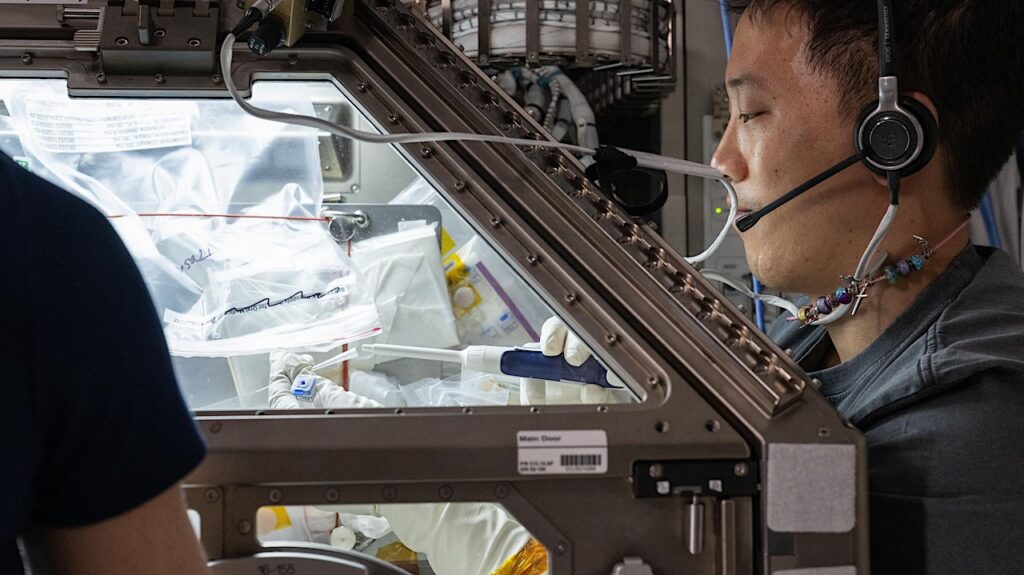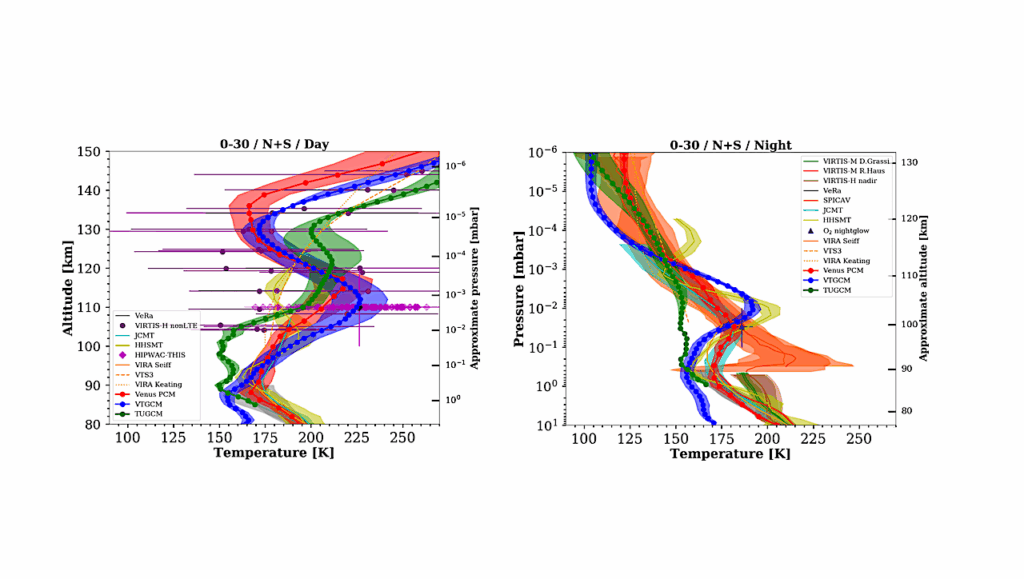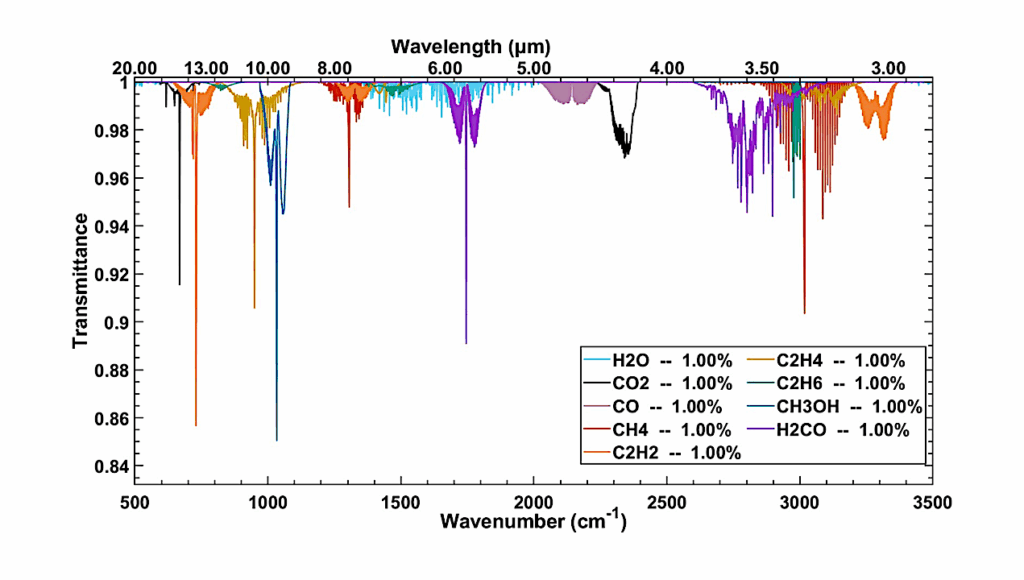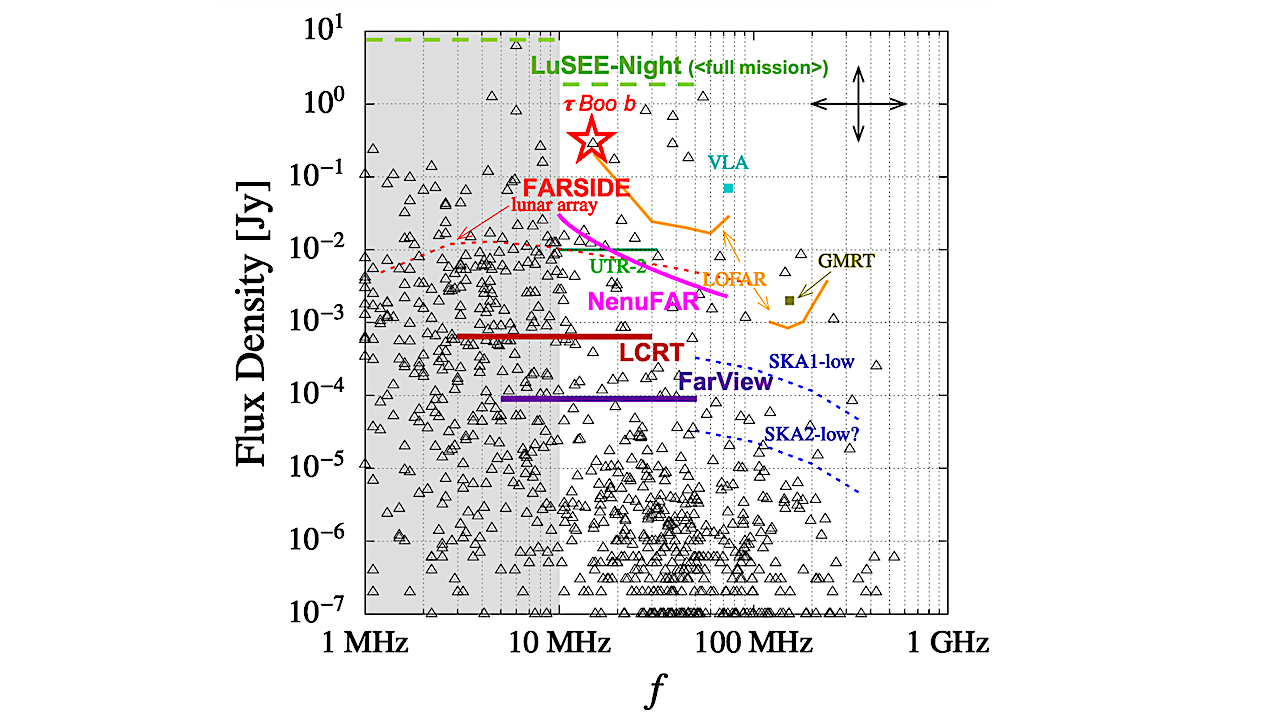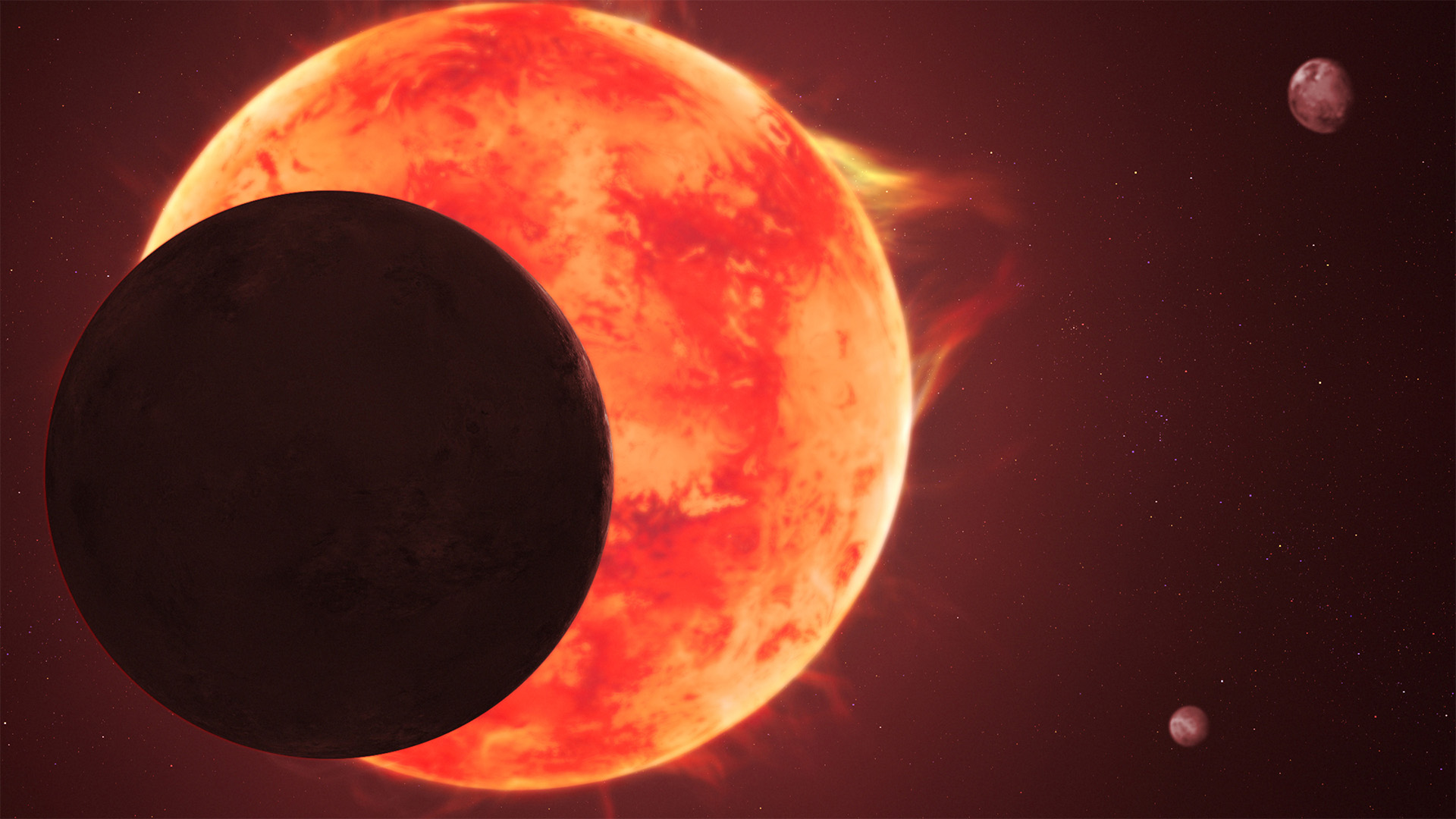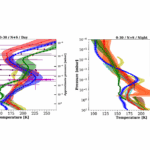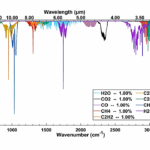Now Reading: Linking Planet Formation To Exoplanet Characteristics: C/O As A Diagnostic Of Planet Formation
-
01
Linking Planet Formation To Exoplanet Characteristics: C/O As A Diagnostic Of Planet Formation
Linking Planet Formation To Exoplanet Characteristics: C/O As A Diagnostic Of Planet Formation

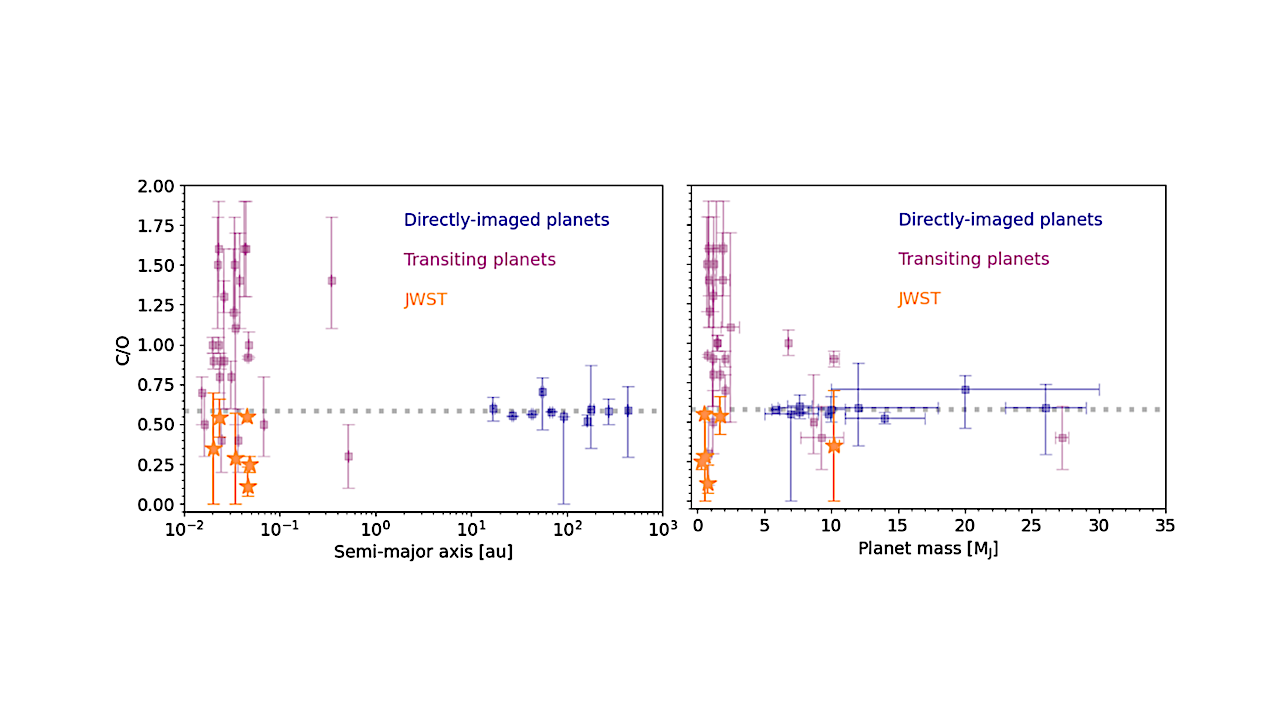
Global atmospheric C/O values for directly-imaged (blue) and transiting (purple) planets as a function of semi-major axis (left) and planet mass (right). This plot is reproduced using the data compiled in Hoch et al. (2023). Added to this plot are values from current C/O values reported in the literature (Ahrer et al. 2023; Alderson et al. 2023; Feinstein et al. 2023; Rustamkulov et al. 2023; Tsai et al. 2023; Edwards & Changeat 2024; Smith et al. 2024; Xue et al. 2024; Bell et al. 2023; Radica et al. 2023; Taylor et al. 2023; Coulombe et al. 2023) from the analysis (or inclusion) of data from JWST (orange). Error bars are included only if reported. The dotted horizontal line shows the solar C/O value (0.58; Asplund et al. 2021). — astro-ph.EP
Gas-giant exoplanets are test cases for theories of planet formation as their atmospheres are proposed to carry signatures of their formation within the protoplanetary disk.
The metallicity and C/O are key diagnostics, allowing to distinguish formation location within the disk (e.g., relative to snowlines), and mechanism (e.g., core accretion versus gravitational instability).
We can now probe the composition of the planet-forming regions of disks, and that in gas-giant exoplanets, to scrutinise these theories and diagnostics. So far, ALMA has revealed that the outer disk regions are typically metal-depleted and O-poor, whereas JWST is showing that the inner disk regions around Sun-like stars are mostly O-rich.
Further, JWST is showing that most transiting gas-giant planets are typically metal-enriched and O-rich, consistent with formation at/within the water snowline and pollution by icy bodies. There is emerging an arguably “conventional” picture of gas-giant planet formation for transiting planets, to be confirmed, of course, with future data.
Catherine Walsh (University of Leeds)
Comments: Accepted for publication in IAU Symposium 383 proceedings “Astrochemistry VIII: From the first galaxies to the formation of habitable worlds”. This short review was composed in January 2024 and all references/information are up to date until that time
Subjects: Earth and Planetary Astrophysics (astro-ph.EP); Astrophysics of Galaxies (astro-ph.GA)
Cite as: arXiv:2508.09587 [astro-ph.EP] (or arXiv:2508.09587v1 [astro-ph.EP] for this version)
https://doi.org/10.48550/arXiv.2508.09587
Focus to learn more
Submission history
From: Catherine Walsh
[v1] Wed, 13 Aug 2025 08:02:48 UTC (656 KB)
https://arxiv.org/abs/2508.09587
Astrobiology,
Stay Informed With the Latest & Most Important News
Previous Post
Next Post
-
 01From Polymerization-Enabled Folding and Assembly to Chemical Evolution: Key Processes for Emergence of Functional Polymers in the Origin of Life
01From Polymerization-Enabled Folding and Assembly to Chemical Evolution: Key Processes for Emergence of Functional Polymers in the Origin of Life -
 02Panasonic Leica Summilux DG 15mm f/1.7 ASPH review
02Panasonic Leica Summilux DG 15mm f/1.7 ASPH review -
 03How New NASA, India Earth Satellite NISAR Will See Earth
03How New NASA, India Earth Satellite NISAR Will See Earth -
 04And Thus Begins A New Year For Life On Earth
04And Thus Begins A New Year For Life On Earth -
 05Astronomy Activation Ambassadors: A New Era
05Astronomy Activation Ambassadors: A New Era -
 06Two Black Holes Observed Circling Each Other for the First Time
06Two Black Holes Observed Circling Each Other for the First Time -
07SpaceX launch surge helps set new global launch record in 2024













